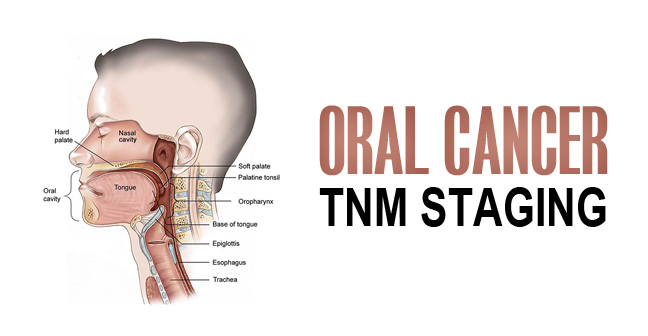
Doctors carry out a variety of diagnostic tests to identify the level/ stage of cancer. In this article, we will have a detailed look at the various Oral Cancer TNM Staging. The determination of TNM Staging has been helpful to both doctors and patients as this staging helps in easy understanding of the future procedures.
The stage and treatment of oral cancer are defined according to the TNM system. TNM staging also assists the doctors and patients to understand how big the tumour is and what is its level and how to treat it. So that they can progress in a right direction. TNM stands for:
T – Tumour
N – Node
M – Metastasis
Doctors calculate and analyse the T, N, and M scores individually and then decide the stage of Oral Cancer. Tumour, Node, and Metastasis are further divided into multiple types. Check the complete list of TNM staging below.
Tumour (T) Category
Tumour (T) category is used to determine the size of a tumour. The further classification of T-category is:
TX: This is the primary stage and major symptoms are not observed at this stage. So, TX stage can’t be accessed.
TO: Primary Stage. Can’t be found or diagnosed.
Tis: This stage is called Carcinoma in situ – the group of abnormal cells. These cells are present on the top lining of the oral cavity. The cancer cells are still to increase in size. So, again this a primary stage.
T1: The Tumour size is of 2 cm or smaller.
T2: The Tumour size is between 2 to 4 cm.
T3: The Tumour size is bigger than 4 cm.
T4: The T4 stage is further divided into two types-
T4a: In this stage, the Tumour starts to infect the nearby structures/ parts. For those who are suffering from Oral Cavity Cancer, the cancer cells start spreading in bones of the jaw or face or maxillary sinus or on the deep muscle of the tongue, or on the skin of the face. So, doctors define this stage as the moderate advanced local disease.
T4b: In T4b stage, the cancer cells have been grown through the nearby structures/ parts. Now, these cells can lead to any oral cancer type. Doctors call this stage – the advanced local disease. Specific treatment under proper guidance is must at this stage.
Node (N) Category
This stage determines whether the cancer cells are present in the lymph nodes or not. Node (N) stage is classified into four types:
NX: Primary stage, no information can be accessed.
NO: The cancer cells has not infected any of the nearby lymph nodes.
N1: This is the initial stage of a Tumour. The cells infect only one nearby lymph node that too on the same side. In this case, the lymph node is not bigger than 3 cm.
N2: The N2 stage is further divided into three types:
N2a: In this case, only one nearby lymph node is infected that too on the same side, and the lymph node size is between 3cm to 6cm.
N2b: In this case, two or more lymph nodes on the same sides are infected, and the size of the lymph node is larger than 6cm.
N3c: In N3c, one or more lymph nodes are infected on both sides of the neck or on the opposite side of the primary Tumour. The lymph node, in this case, is not larger than 6cm.
N3: In this type of Node, the size of a lymph node is larger than 6cm.
Metastasis (M) Category
In the Metastasis category, the diagnostic test checks whether the cancer cells have spread to any other part of the body. The further classification of Metastasis are:
M0: In this stage, no infection is detected in any part of the body.
M1: When the test’s result shows that cancer has reached outside the neck or head portion, you are at the M1 stage. We call this the most critical stage.
This is the complete hierarchy of the Oral Cancer TNM stages. So, anyone who is experiencing any symptoms of oral cancer must go for diagnostic tests. According to the results, classify your disease as per the TNM staging and undergo the procedure as required.
Leave a reply




Leave a reply